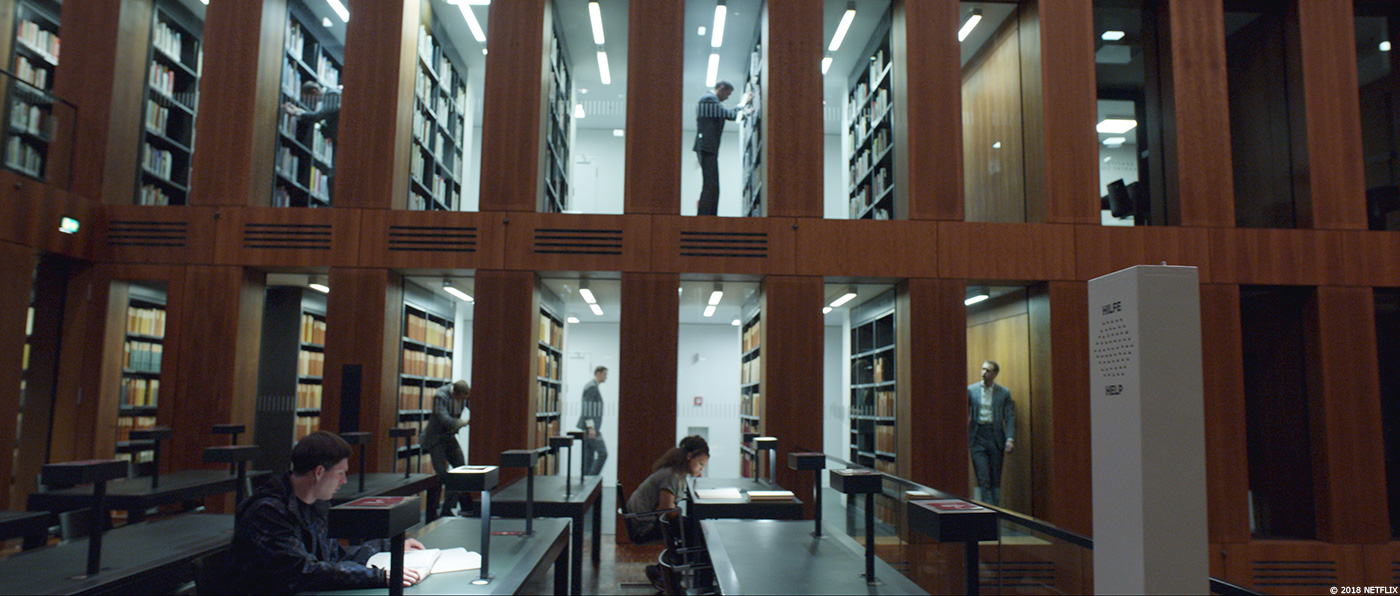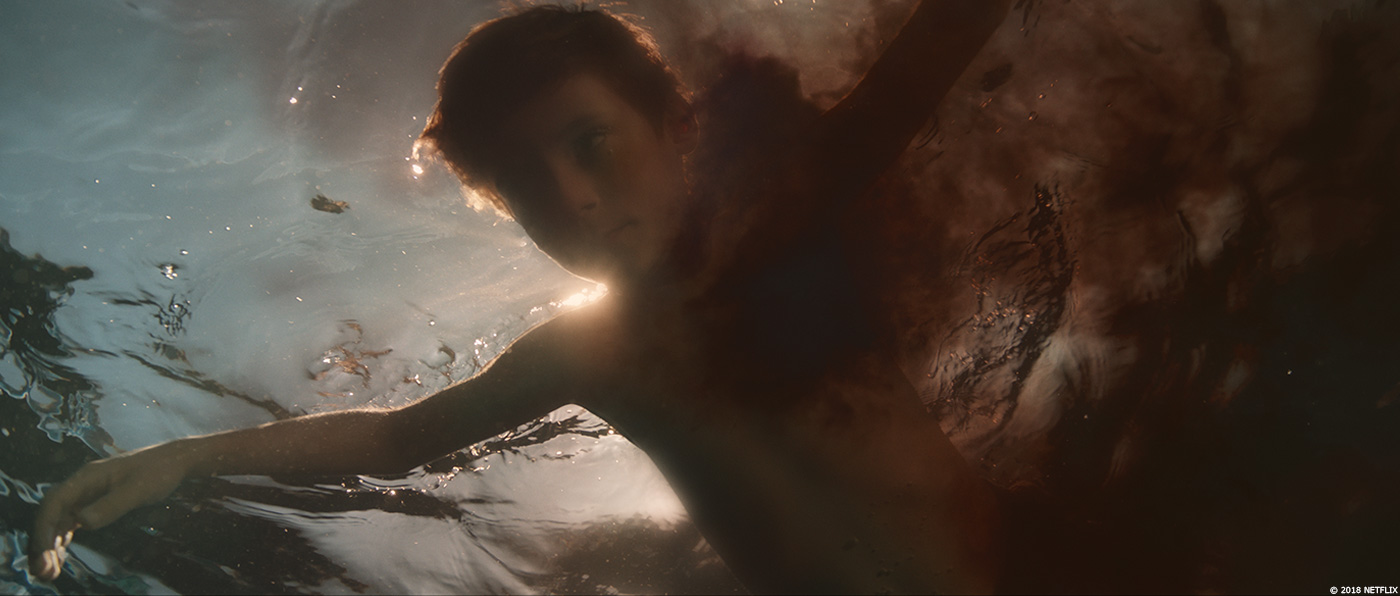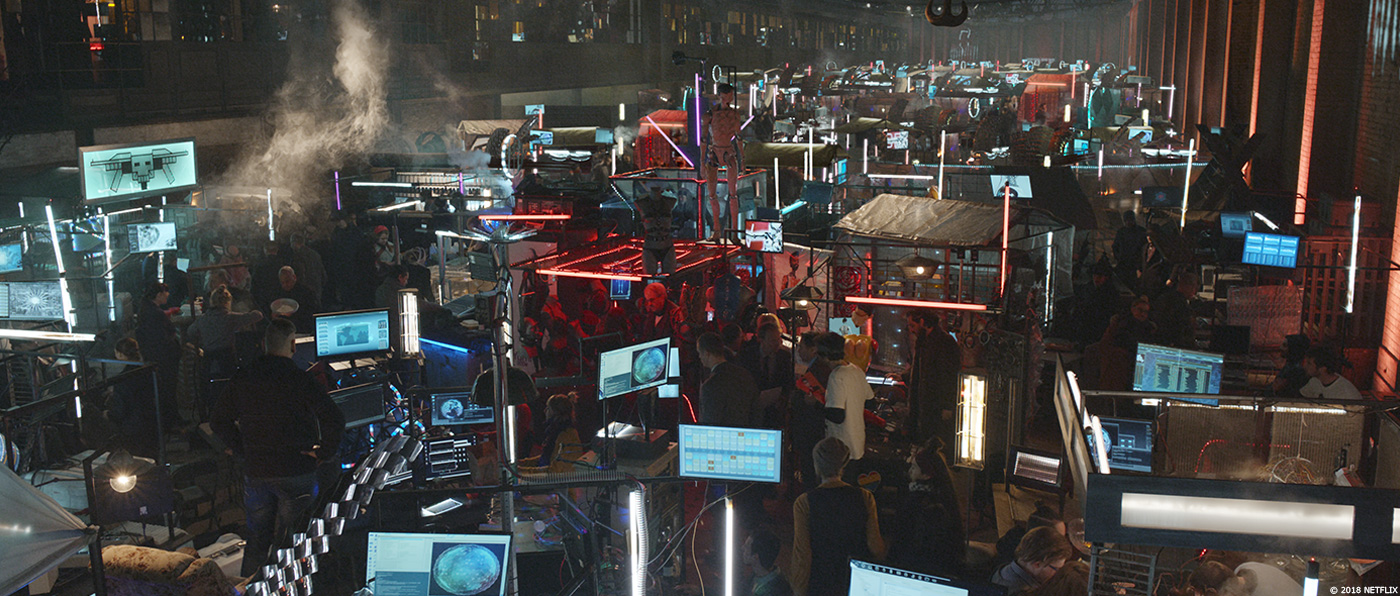Salvador Zalvidea has over 18 years of experience in the visual effects. He has worked on films like THE COMMUTER, KINGSMAN: THE SECRET SERVICE and THE GREAT GATSBY. As a VFX Supervisor, he took care of the effects in CLASS SEASON 1, DOCTOR WHO SEASON 9 and DOCTOR WHO CHRISTMAS SPECIAL.
What is your background?
After Fine Arts I studied filmmaking at ESRA in France. My first major position in post-production was at Paris-based production company Planète Spots, where I joined the post-production department. I explored various areas of filmmaking as a 3rd assistant director and production assistant across a range of feature films, commercials and documentaries before returning to the post-production department to manage the team. I’ve been in VFX ever since then as an artist or latterly a supervisor.
In 2000, I started my own company, Monsieur le Loup, working as a director on varied projects including designing interactive engine models for a french aircraft manufacturer, directing music video clips and editing documentaries. In September 2010, I made the move to London, to work in the Compositing department at Prime Focus and progressed to 2D Supervisor. During my time with the company I worked on KINGSMAN, DREDD 3D, TOTAL RECALL and THE GREAT GATSBY. I then made the move to Milk to supervise various projects including the BAFTA nominated DOCTOR WHO SEASON 9 before joining Cinesite in 2016.
How did you and Cinesite get involved on this show?
Having worked previously with Jones in 2009 on cult sci-fi classic MOON, Cinesite joined the production to support the lead VFX vendor The Senate and re-teamed with director Duncan Jones and Liberty Films for MUTE. They knew the studios would work well together and the project would continue to get the attention it deserved and be looked after. I was lucky enough to lead the team on MUTE which was my first project since I joined Cinesite.
How was the collaboration with director Duncan Jones and what was his approach and expectations about the visual effects?
We worked very closely with Duncan and Stuart Fenegan as our main contacts throughout. Both are very experienced and knowledgeable about working with visual effects (Duncan’s previous production WARCRAFT was VFX heavy). Initially, we were briefed by VFX Supervisor Martin Waters who was on set and leading The Senate team, then at a later date we received a fuller creative brief from Duncan. There were no storyboards and the approach to the effects was very fluid; we simply sat down in front of the edit and discussed what was required.
Duncan was editing in LA, so we arranged CineSync sessions once or twice a week to show shots and discuss progress. This system worked well. Whilst the show had a tight budget, Duncan was sympathetic to the constraints we were working within. For the Hacker’s Hall shot we showed a layout early on which Duncan approved; from this early stage he was happy for us to push to final without much concern.
Duncan’s prime focus was on telling the story, not the intricate detail of the VFX. Ultimately, when our shots worked within the wider context of supporting the story, he was happy.
What are the sequences made by Cinesite?
Cinesite’s first shot in MUTE shows Leo’s childhood accident. Hit by a speedboat rotor, he floats lifelessly in the water with blood swirling around him. Another key shot in the film establishes the Hackers Hall environment, a seedy indoor market with line upon line of dark market-stall type booths filled with screens, geeks and dubious technology-based activities. Other visual effects created by the team included environments, CG weapons and eagle-eyed Duncan Jones aficionados might even notice a CG Gerty (robot from Moon) lurking in the background of a couple of shots!
Another key shot in the film establishes the Hackers Hall environment, a seedy indoor market with line upon line of dark market-stall type booths filled with screens, geeks and dubious technology-based activities. Other visual effects created by the team included environments, CG weapons and eagle-eyed Duncan Jones aficionados might even notice a CG Gerty (robot from Moon) lurking in the background of a couple of shots!
Can you explain in detail about the set extension for the Hacker’s Hall?
Hackers Hall was one of the more complex, larger scale environments that Cinesite created for MUTE. The original shot had a few market stalls in the foreground shot against a giant green screen. Cinesite was tasked with extending this indoor environment to make it much larger. Models were created using the foreground as reference and we created 2.5D projections using other plates to texture the stalls from all angles; the CG stalls were then replicated to populate the background. Crowd and smoke elements shot by the production were also added, along with projected graphics on to the walls.
How did you create the robotic arm?
You spotted that then! Yep a few eagle-eyed Duncan Jones aficionados have noticed our CG Gerty lurking in the background of a couple of shots!
This shot is a good example of Duncan’s approach with most of the environments; adding sci-fi or slightly futuristic elements to the plate in a subtle way which doesn’t detract from the storyline or central action.
The robotic arm is a nod to Duncan’s previous sci-fi film MOON, where Gerty, the robot companion to central character Sam, is a key presence. Including Gerty arm in this sequence, a fun allusion to the earlier film, was Stuart’s idea. However, because MOON was completed so long ago, the team had to remodel and texture Gerty’s arm from scratch.
Although this scene could be taking place in any Starbucks or contemporary coffee shop, adding GERTY’s arm gives a subtle believability to the near-future setting. It was fun to revisit Gerty!
Cactus Bill gets a knife through his throat. How did you create this knife?
Our job was to extend the blade, the hilt of which was shot as a stubby prop. The knife appears throughout several shots, with the hilt of the weapon held at varying distances from the person being attacked. The CG blade created by the team needed to compensate for this and the length was cheated from shot to shot so that the distance from the tip was consistent. In addition, in some shots the angle of the blade needed to be subtly altered to make it work within the context of the action.
How did you manage the lighting?
Getting the reflections right was a challenge. In most shots, we created our own bespoke reflection map to allow us to add what we wanted.
For the later shot where Cactus’ knife is plunged into his own neck, no chrome balls or HDRI reference was taken on set. Where the knife punctures the skin, we added wounds and blood, distorting the skin and adding shadows, again cheating the angle of the blade because the prop was shorter.
The final sequence took place on a bridge. How did you extend this environment?
Plates were shot of the stuntmen on location and the actors separately against green screen in the studio. Without motion control, the two takes needed to be matched together, with Duck’s face from one shot replacing the stuntman. Also, because the stuntmen were wearing protective clothing, it was necessary to completely replace Duck’s hands, which are prominent in the final shot.
Skarsgård was shot in a studio tank with the bridge element as a separate plate. The actor was added into the water filmed on location, with adjusted depth of field and lighting to make him sit into the location water convincingly. Because there was no actual gate in the bars running along the edge of the bridge, the young actress was filmed on a raised platform. The VFX team lowered her into position for the final shot.
Did you receive specific indications and references for the mountains?
Digital matte painter Emile Hardy used his own photos taken in the Alps to create the distant snowy 180-degree environment, tweaked to achieve the look Duncan wanted. The skies and background were used in other shots throughout the sequence to give consistency to the time of day and conditions.
What was the main challenge on this show?
Although this was a Netflix production for TV release, we worked in 4K so the attention to detail was just as necessary as other film shows; there was nowhere to hide.
In the early stages there were unknowns, like the underwater blood shots and look of the knife, but we flagged these and they were discussed and resolved. Duncan was always happy with our approach and there were no dramas.
The short timeframe was a challenge. Having said that, it never felt stressed or rushed and that’s mainly because of the ease of working with Duncan. Communication was always straight and very clear. He was a fun person to work with!
What is your favourite shot or sequence?
Leo, unable to speak because of his childhood injuries, struggles with modern technology whilst looking for Naadirah. Attempting to find out information in a large library, the help system is voice activated. In a poignant time-lapse showing his commitment to the challenge, we see multiple Leo’s searching methodically through the vast library sections over the span of a few hours, as the camera pans through the open-plan building.
The VFX team combined several takes of Leo searching the library, aligning the multiple passes without the use of motion control. A digital matte painting animation of the lights turning on was created, and the lighting guides the eye towards the back of the building, where Leo appears at the end of the shot.
This is one of my favourite shot in the film. Although it wasn’t particularly technical or difficult from a VFX perspective, it shows Leo’s frustration and the passing of time beautifully.
What is your best memory on this show?
Getting to know Cinesite’s team. Reviews with Duncan were sometimes a bit surprising. I remember one where I couldn’t concentrate much because there was a giant stuffed bear in the background. Overall it was a stress free project with interesting challenges.
How long did you work on this show?
We had a pretty short turnaround. We held our preliminary discussions and meetings in February, received the first elements mid-March and delivered on 31st May (with some additional DI tweaks and mattes in June).
What’s the VFX shots count?
Ultimately Cinesite contributed about 100 shots to the 4K production.
What was the size of your team?
In total, we had about 56 people working on the production, including data ops and production support.
What is your next project?
I’m currently leading Cinesite’s team on ADRIFT, a thriller directed by Baltasar Kormákur.
Based on the true story of two sailors, Tami Oldham and Richard Sharp who set out on a journey across the ocean in 1983 and faced one of the most catastrophic hurricanes in recorded history.
What are the four movies that gave you the passion for cinema?
Passion for visual effects was driven by many different movies, but here are some from my youth that made quite an impression on me, in no particular order: ETERNAL SUNSHINE OF THE SPOTLESS MIND and most of Gondry’s work, RAIDERS OF THE LOST ARK, TERMINATOR 2: JUDGMENT DAY, TOY STORY, WHO FRAMED ROGER RABBIT, JURASSIC PARK, Zbig Rybczynski’s work and a french TV program called L’OEIL DU CYCLONE which focused on new and innovative media with yearly specials on Imagina, a french festival for CG images in the 80’s and 90’s…
MUTE – VFX BREAKDOWN – CINESITE
A big thanks for your time.
// WANT TO KNOW MORE?
Cinesite: Dedicated page about MUTE on Cinesite website.
© Vincent Frei – The Art of VFX – 2018










